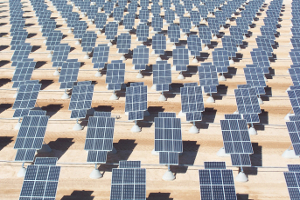 To go solar or not to go solar? Homeowners looking to save money on their energy bills have a number of factor to consider.
To go solar or not to go solar? Homeowners looking to save money on their energy bills have a number of factor to consider.
It's easy to get excited about installing solar panels on your house - particularly when you find out that state and federal rebates can cut the price almost in half.
But, as we've reported before, you might get more bang for your buck from far cheaper (and yes, far less exciting) fixes. Small things like weather stripping your doors, turning down the thermostat or upgrading your refrigerator, can put a dent in your utility bills.
Even if you've done all that, solar panels still might not pencil out. That's because of something called "tiered pricing", which is how most utilities calculate your monthly energy bills. The idea is that energy is relatively cheap as long as you stay within a certain amount. Exceed that, and you're in the next "tier," where the rate increases. At the next tier, the rate is even higher. The difference between top tier and bottom pier can be as much as 44 cents versus 8 cents per kilowatt hour.
That's why solar panels tend to make more sense for people with substantial energy needs - the big, air-conditioned houses, the heated pools, the multiple flat-screen TVs.
